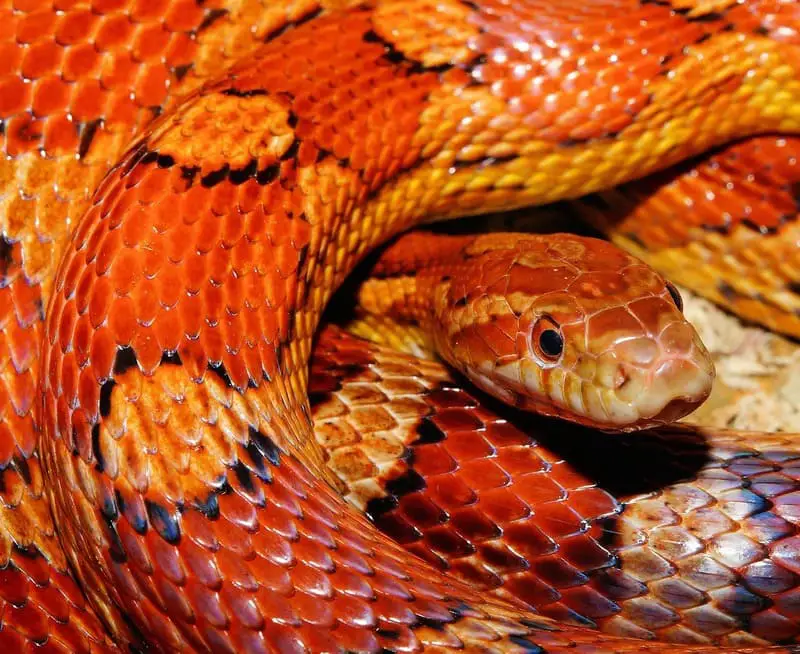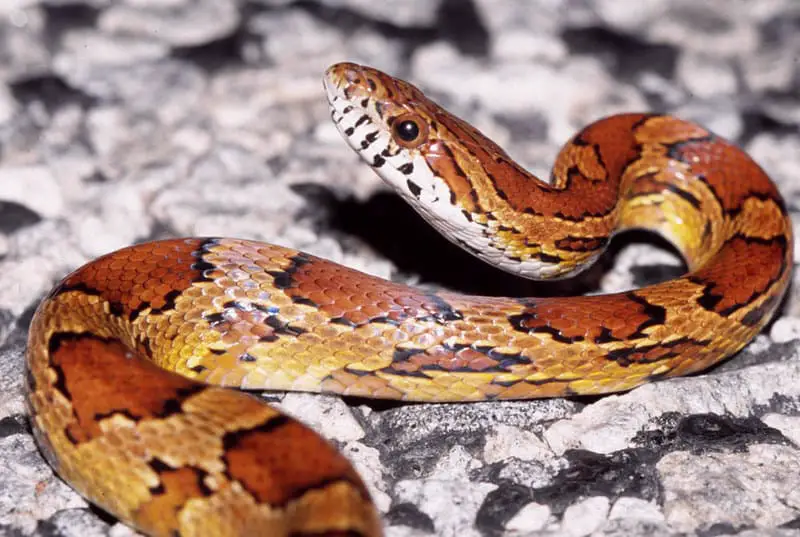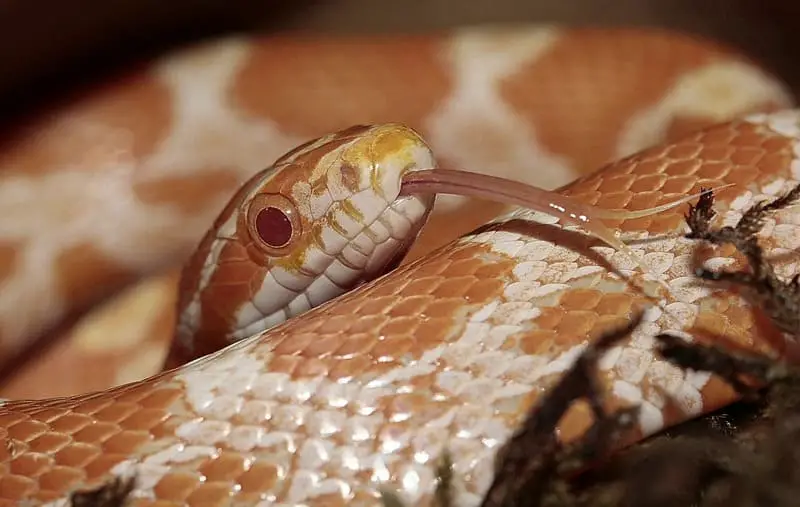The allure of owning a pet snake is undeniable. These fascinating creatures, with their sinuous bodies and mesmerizing gaze, have captivated humans for centuries. However, one question that often arises when discussing pet snakes is whether they are dangerous. In this comprehensive examination, we will explore the various aspects of pet snake ownership to answer the question: Are pet snakes dangerous?

Understanding the Fascination with Pet Snakes
Before delving into the potential dangers associated with pet snakes, it’s important to acknowledge why people are drawn to these exotic pets in the first place. The appeal of pet snakes can be attributed to several factors:
1. Aesthetic Beauty
Snakes come in a wide variety of colors and patterns, making them visually captivating. Species like ball pythons, corn snakes, and boa constrictors exhibit stunning patterns that have long fascinated enthusiasts.
2. Low Maintenance
Compared to traditional pets like dogs or cats, snakes are relatively low-maintenance. They don’t require daily walks, grooming, or social interaction. This makes them an attractive option for individuals with busy lifestyles or those seeking a pet with lower time demands.
3. Space Efficiency
Snakes don’t need a lot of space. Even larger species can be comfortably housed in appropriately sized enclosures, which can be an advantage for people with limited living space.
4. Educational Value
Keeping a snake as a pet can be a unique educational experience. Observing their behavior, life cycles, and biological adaptations can be a fascinating journey into the natural world.
5. Mystique and Uniqueness
The aura of mystique and uniqueness that surrounds snakes is undeniably appealing to some. Their association with ancient cultures, symbolism, and folklore adds to their intrigue.

The Diversity of Pet Snake Species
When discussing the potential dangers of pet snakes, it’s essential to recognize that not all snakes are created equal. There is significant diversity among snake species, and their suitability as pets varies considerably. Here are some popular pet snake species and their characteristics:
1. Ball Python (Python regius)
Size: Adult ball pythons are relatively small, typically reaching lengths of 3 to 5 feet.
Behavior: Ball pythons are known for their docile and gentle temperament. They are often recommended as a good choice for first-time snake owners.
Feeding: They primarily feed on rodents and are generally easy to feed in captivity.
2. Corn Snake (Pantherophis guttatus)
Size: Corn snakes are small to medium-sized, ranging from 3 to 5 feet in length.
Behavior: Corn snakes are typically docile and tolerate handling well. They are often recommended for beginners.
Feeding: Their diet consists mainly of rodents, making them relatively easy to care for.
3. Boa Constrictor (Boa constrictor)
Size: Boa constrictors can grow to be quite large, with adult sizes ranging from 6 to 10 feet or more.
Behavior: While they are generally calm, their larger size can make them more challenging to handle for beginners.
Feeding: Boa constrictors are constrictor snakes that primarily feed on mammals. Feeding can be less frequent due to their size.
4. King Snake (Lampropeltis spp.)
Size: King snakes come in various species and sizes, with adults ranging from 2 to 5 feet.
Behavior: King snakes are known for their inquisitive and active nature. They can be good choices for those who want an engaged pet snake.
Feeding: They have a varied diet that includes other snakes, making their dietary needs slightly more complex.
5. Green Tree Python (Morelia viridis)
Size: Green tree pythons are arboreal snakes and are smaller, with adults reaching lengths of 4 to 6 feet.
Behavior: They are known for their striking green coloration and can be more challenging to care for due to their specific habitat requirements.
Feeding: Their diet consists mainly of birds, making them a unique and more complex pet snake.
Are Pet Snakes Dangerous to Their Owners?
The question of whether pet snakes are dangerous to their owners can be addressed from several angles, considering different aspects of snake ownership.
1. Snake Bite Risk
Venomous vs. Non-Venomous: One of the most significant factors in assessing the danger of pet snakes is whether the species is venomous or non-venomous. Non-venomous snakes, which include the majority of pet snake species, lack the venom necessary to harm humans.
Venomous Species: While non-venomous snakes are typically harmless to humans, the ownership of venomous species is a contentious issue. Venomous snake ownership is often subject to strict regulations and permits in many regions. Keepers of venomous snakes must adhere to stringent safety protocols, including secure enclosures and proper handling equipment. Even experienced snake enthusiasts approach venomous snakes with caution.
Non-Venomous Species: Non-venomous pet snakes are generally not dangerous in terms of inflicting life-threatening injuries. However, they can bite in self-defense or if they feel threatened. These bites are typically non-venomous and may cause minor injuries such as puncture wounds or scratches. Ball pythons, corn snakes, and other commonly kept species have teeth designed for grasping rather than delivering venom.
2. Handling Risks
While snake bites are a concern for some, the risks associated with handling pet snakes are relatively low, especially when dealing with non-venomous species. Most pet snakes are docile and tolerate handling well. However, there are still considerations to keep in mind:
Stress and Temperament: Improper handling, frequent disturbances, or a stressful environment can lead to behavioral changes in pet snakes, potentially resulting in defensive or aggressive responses. Proper care, appropriate handling techniques, and respecting the snake’s need for rest are essential to maintain their docile temperament.
Safety Measures: Always handle a pet snake with care and use proper handling equipment such as snake hooks or tongs when necessary. Avoid abrupt or rough movements, as this can startle the snake.
Size and Strength: Larger snake species, while not inherently dangerous, can be more challenging to handle due to their size and strength. It’s crucial to have experience and confidence when dealing with these species.
3. Health Risks
Pet snakes can pose certain health risks to their owners, primarily related to zoonotic diseases. Zoonotic diseases are those that can be transmitted from animals to humans. While the transmission of zoonotic diseases from pet snakes is relatively rare, it’s still important to take precautions:
Salmonella: Salmonella is a common bacterial infection associated with reptiles, including pet snakes. It can be transmitted through direct contact with the snake or its environment. Practicing good hygiene, such as thorough handwashing after handling the snake or cleaning its enclosure, can help mitigate the risk of salmonella transmission.
Parasites: Pet snakes can carry internal parasites that may pose health risks to their owners if they come into contact with contaminated feces or other waste. Routine veterinary care and proper enclosure maintenance can help minimize the risk of parasitic infections.
Allergies: Some individuals may develop allergies to pet snake dander or proteins present in snake saliva. Allergic reactions can manifest as respiratory symptoms or skin rashes. If you are prone to allergies, it’s important to be aware of this potential risk.
4. Ethical Considerations
The question of whether pet snakes are dangerous extends beyond physical harm and health risks. It also raises ethical considerations, particularly related to conservation and the exotic pet trade:
Habitat and Conservation: The global demand for pet snakes, especially wild-caught individuals, can contribute to habitat destruction and the depletion of snake populations in the wild. This raises ethical concerns about the impact of the exotic pet trade on the conservation of these animals.
Responsible Ownership: Responsible pet snake ownership entails providing proper care, housing, and enrichment for the snake. Uninformed or negligent ownership can be detrimental to the snake’s well-being and contribute to negative perceptions of snake ownership.
Breeding and Captive-Bred Snakes: Supporting responsible breeding practices and choosing captive-bred snakes over wild-caught individuals can help reduce the impact of the pet trade on wild snake populations.

Safety Precautions and Responsible Ownership
Ensuring the safety of both the owner and the pet snake requires responsible ownership and adherence to safety precautions:
1. Choose the Right Species
Selecting the right snake species that aligns with your level of experience, lifestyle, and preferences is crucial. Avoid venomous species if you are a beginner or do not have the necessary experience and permits.
2. Educate Yourself
Before acquiring a pet snake, invest time in learning about their specific care requirements, behavior, and dietary needs. Knowledge and preparation are key to successful snake ownership.
3. Secure Enclosures
Invest in appropriate enclosures that are escape-proof and provide adequate space, heating, lighting, and hiding spots for your snake.
4. Practice Good Hygiene
Maintain proper hygiene when handling your pet snake and cleaning its enclosure. Wash your hands thoroughly after handling the snake or its habitat to reduce the risk of zoonotic diseases.
5. Handle with Care
Handle your pet snake gently and responsibly. Avoid sudden movements and be attuned to the snake’s behavior. Use handling equipment when necessary, especially with larger species.
6. Veterinary Care
Regular veterinary check-ups are essential for your snake’s health and well-being. A veterinarian experienced in reptile care can detect and address health issues.
7. Support Conservation
Consider adopting captive-bred snakes rather than wild-caught individuals. Supporting ethical breeding practices and conservation efforts can contribute to the preservation of snake species in the wild.
8. Compliance with Regulations
Be aware of and comply with any local, state, or national regulations and permits related to snake ownership, particularly when it comes to venomous species.
9. Educate Others
Educate those around you about responsible snake ownership and dispel myths and misconceptions about these animals.
Conclusion
The question of whether pet snakes are dangerous is a multifaceted one. While owning a pet snake does come with certain risks, these risks are often manageable and can be mitigated through responsible ownership and adherence to safety precautions. Non-venomous pet snakes, which make up the majority of the pet snake trade, are generally not dangerous in terms of causing life-threatening harm. Their bites are typically non-venomous and result in minor injuries, if any.
However, it’s important to approach snake ownership with a commitment to education, proper care, and ethical considerations. Understanding the specific needs and behaviors of your chosen snake species, maintaining their health, and supporting conservation efforts are essential components of responsible snake ownership.
Ultimately, the danger associated with pet snakes largely depends on the species, the owner’s knowledge and experience, and the level of responsibility exercised in their care. When these factors align, pet snakes can be captivating and rewarding companions, adding a unique dimension to the world of exotic pet ownership.